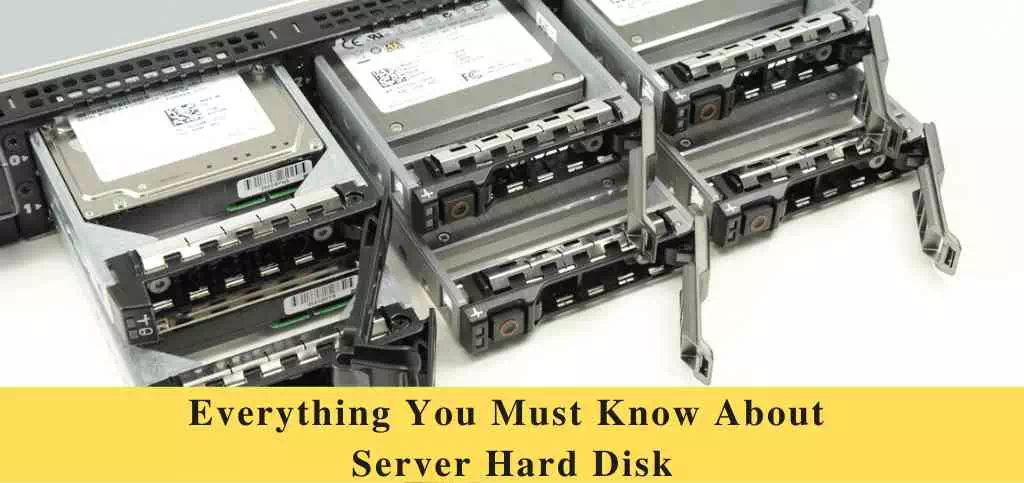Every data company needs a robust IT infrastructure to ensure seamless data accumulation and processing. At the heart of these data processing units are Dell server hard drives that store huge amounts of data generated through the network to ensure the smooth functioning of work. Server hard disks are an integral part of any data network, thus, these systems need to be extremely efficient at handling the overflow and underflow of data within the network.
Drive reliability is extremely important for server users because it holds large amounts of important data. This ensures that the server hard drive will function properly in a long and large work environment, even with large volumes. Servers often use SAS hard disks. This is because outstanding advantages of SAS hard disks include high speed, stability and better security aspects. In addition to such server hard drives, low-end server systems can use hard drives. Normally here SATA Server Drives are preferable. Recently SSD server drives have been preferred over SAS server drives by many organizations too.
Classification of Server Hard Drives
Server hard drives are categorized into different interfaces as mentioned below:
- The SAS hard disk has a SAS 1.0 and a SAS 2.0 interface. SAS 1.0 has a bandwidth of around 3.0 GB/s. Despite this high bandwidth, it is losing its market relevance in favor of SAS 2.0.
- The SCSI hard drive uses the traditional and old transmission interface. You should be aware that the hard drive market has already stopped selling SCSI hard drives.
- Near Line SAS or NL-SAS is relatively new to the storage market. NL-SAS drives are essentially enterprise SATA drives with SAS interface, headers, rational speed and media.
- SDE / FDE is the SAS hardware encryption developed by IBM for SAS hard disks. The performance corresponds to that of the SAS hard drive. In addition, SDE / FDE drives have an encryption system that prevents any breach of private data.
- The solid state drive or SSD uses the SSD class recognition system and also uses the SAS 2.0 transmission protocol.
- The FC hard drive is mainly used for external SAN that use fiber optics as the main transmission protocol. This disc has two channels and uses the fiber optic channel to carry all information. Therefore, FC hard drives are used for high-speed transfers.
- The hard drive with SATA interface is also known as the serial hard drive and has become the cornerstone of next-generation PCs as it is equipped with a robust error correction mechanism that can automatically correct detected errors. This can significantly improve data security during data transmission. The latest version of the SATA hard drive use the Differential Signal Amplified System. This filters the noise from natural signals to allow SATA to operate at low voltages.
- Server hard disks are also classified into hot-swap and simple-swap by the hard drive bay. According to HP server hard disk experts, Hot-swap hard drives usually employ a SAS interface. Removing a faulty hard drive component will therefore not affect the balance of the entire system due to the RAID redundancy. However, full functionality must be compatible with the server hard drive backplane and a variety of cards. Usually, it contains a foreign key. In contrast, simple-swap hard drives or wired hard drives are called common drives and come with a blue-colored shelf.
Features of Server Drives
- High reliability: Server hard drive is usually subject to a huge workload because the server has to run for 24 hours. Various hard drive manufacturers have adopted their unique and innovative technology to ensure complete data security. According to Dell server hard drive experts, in order to avoid accidental loss, server hard drives are designed to withstand an impact force.
- High speed: The server hard drive used by the server can reach speeds of around 5,400 rpm (SATA Drives) to 15,000 rpm (SAS Drives) revolutions per minute. This drive also has a large write cache as it handles multiple read and write requests very quickly. Therefore, the average time to access the system is comparatively short. The internal and external transfer rates are also higher in comparison.
- Long Lasting: The server hard drives are durable and store large chunk of historical data depending on the size of the server drive. As the server drives have to work continuously 24*7*365 they are built for maximum reliability, minimum failures and handling requests with minimum latency.
This is some of the basic information you need to know about server hard drives. If you need more guidance on this or are searching for an expert for server hard disks, then you must visit Zaco Computers today. Do connect with our experts who will provide the best possible server drive solution as per your requirements.
